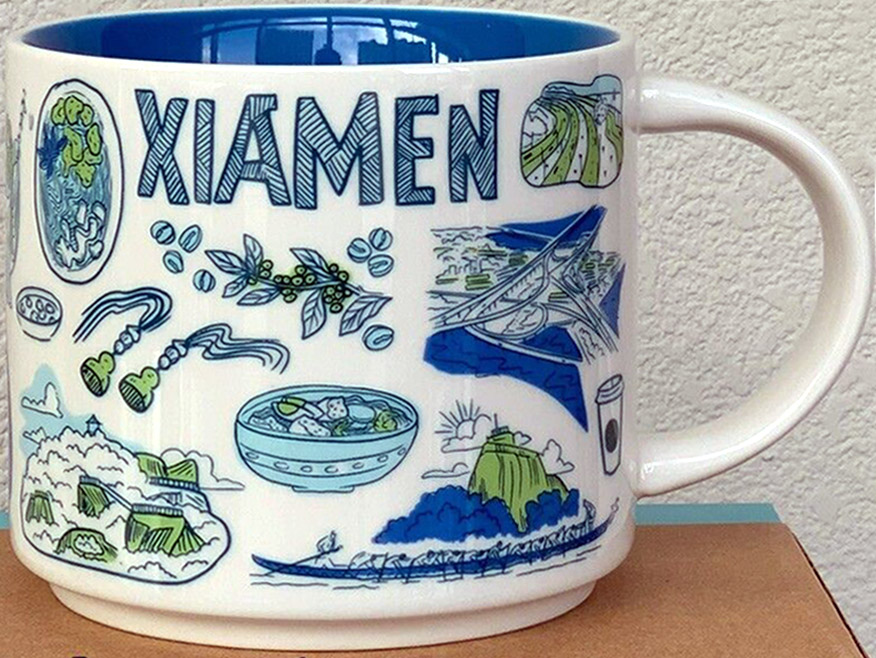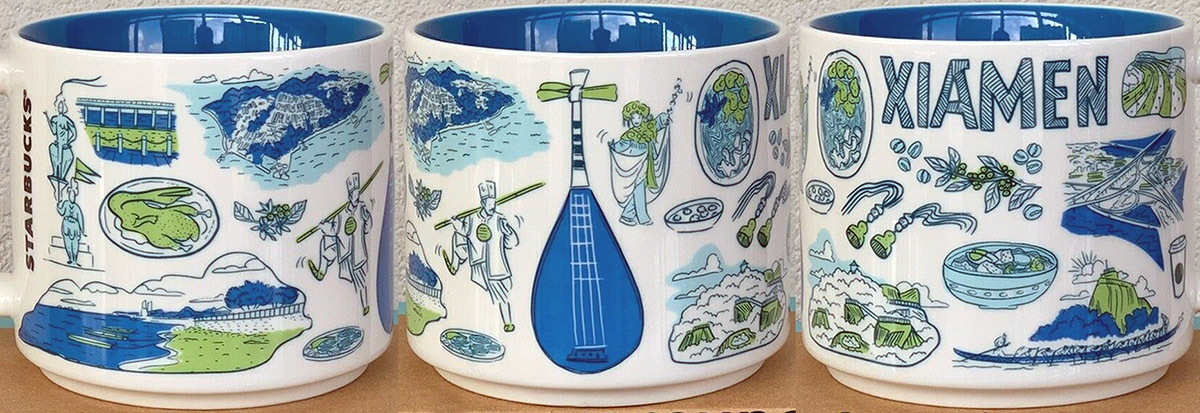
Been There – Xiamen
Starbucks Been There – Xiamen is a mug for a coastal city in southeastern China. Historically known as Amoy, it emerged as a vital port during the Song Dynasty, flourishing through maritime trade. The city played a significant role during the Ming Dynasty as a defense base against pirates and later as a key site during the First Opium War. Its colonial legacy is evident in the Gulangyu Island, a UNESCO World Heritage site, reflecting a blend of Western and Eastern architectural styles. Xiamen’s historical significance is further underscored by its status as one of China’s first Special Economic Zones, marking its enduring importance in the country’s economic and cultural development.
Here are just a few landmarks and symbols of Xiamen:
– Gulangyu Island, a UNESCO World Heritage site, is renowned for its beautifully preserved colonial architecture and car-free streets, creating a tranquil atmosphere for visitors. The island is dotted with lush gardens, historic villas, and winding lanes that invite leisurely exploration. Its unique blend of Western and Eastern influences reflects Xiamen’s rich trading history and cosmopolitan past.
– Nanputuo Temple, with a history dating back to the Tang Dynasty, is one of Xiamen’s most revered Buddhist sites. The temple complex features beautifully crafted halls, intricate statues, and peaceful courtyards that draw both pilgrims and tourists. Its serene surroundings and spiritual significance make it a must-visit landmark in the city.
– Hulishan Fortress, built during the late Qing Dynasty, stands as a testament to Xiamen’s military history. The fortress is home to ancient cannons, including one of the world’s largest coastal cannons, and offers panoramic views of the surrounding sea. Visitors can explore the fort’s tunnels, walls, and barracks, gaining insight into its strategic importance.
– Xiamen Botanical Garden, also known as Wanshi Botanical Garden, offers a peaceful retreat with its diverse collection of plants and scenic landscapes. The garden is set against the backdrop of Wanshi Mountain and features numerous themed sections, including a cactus garden, a rose garden, and a rainforest area. Its natural beauty and tranquility attract both nature lovers and casual visitors.
– The musical instrument on the side of the mug is Nanyin Pipa. This traditional Chinese lute is integral to Nanyin music, a classical style from the Minnan region, including Xiamen. Unlike other types of Pipa, the Nanyin Pipa produces a more delicate and refined sound, making it perfect for the gentle, lyrical melodies of Nanyin. This instrument’s intricate craftsmanship and unique tonal qualities highlight the rich cultural heritage of Southern Fujian’s musical traditions.
– The bowl on the front of the mug is probably Shacha Mian (Shacha Noodles). This iconic Xiamen dish features a savory and slightly spicy broth made from shacha sauce, which is a blend of soybean oil, garlic, shallots, chilies, fish, and dried shrimp. The noodles are typically garnished with a variety of toppings such as thinly sliced pork, seafood, green onions, and cilantro, creating a flavorful and comforting meal that reflects the city’s rich culinary heritage.








































































